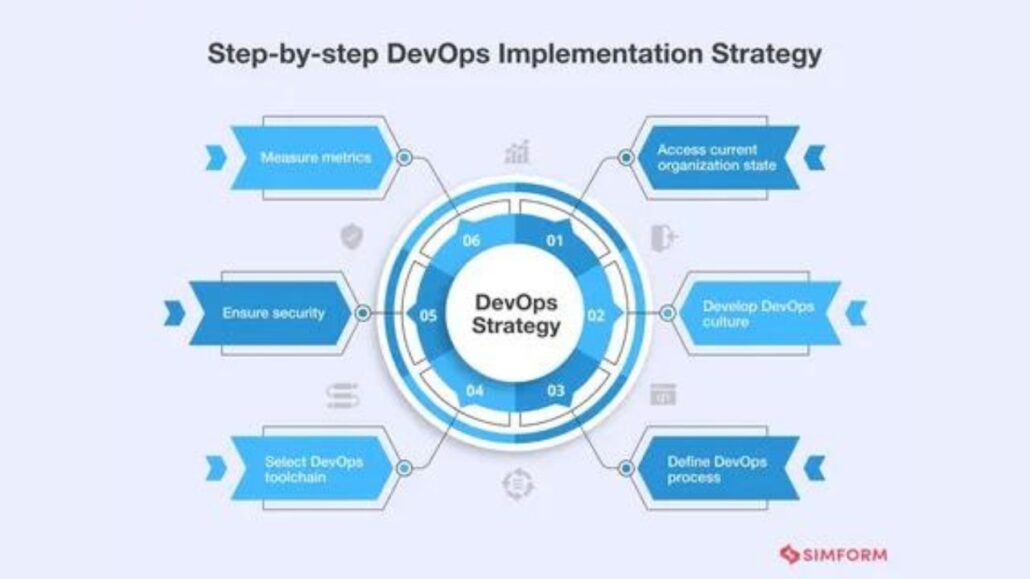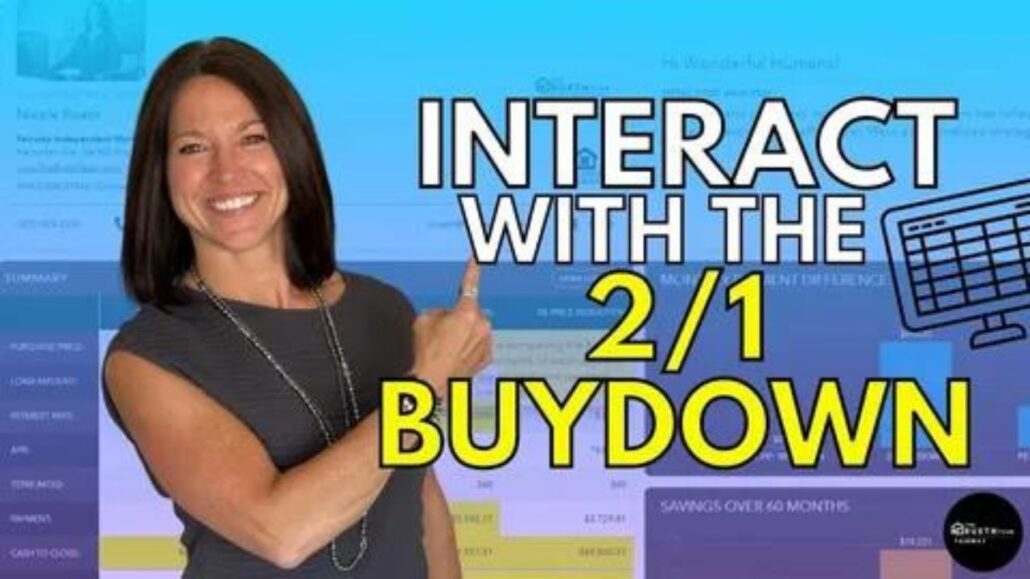A 2-1 buydown on investment property is a mortgage strategy where the interest rate is temporarily reduced for the initial years. It enhances affordability, improves cash flow, and offers short-term benefits, making it an attractive option for investors seeking financial flexibility.
To 2-1 Buydown
The 2-1 buydown emerges as a pivotal strategy in real estate financing, temporarily reducing interest rates for initial loan years.
This approach fosters affordability and bolsters cash flow, enticing investors seeking short-term benefits. With its unique appeal, the 2-1 buydown stands as a compelling option, empowering investors to navigate market landscapes while optimizing returns.
Its mechanics and benefits unveils a potent tool for managing investment properties effectively. As investors delve into innovative financing methods, the 2-1 buydown shines as a beacon of financial ingenuity, reshaping the real estate investment landscape with its transformative potential.
What is a 2-1 Buydown?
A 2-1 buydown is a mortgage financing technique where the interest rate is temporarily reduced for the initial years of the loan term, typically by two percentage points in the first year and one percentage point in the second year.
Investment Properties
Investment properties are real estate assets purchased with the intent of generating income or capital appreciation. Unlike primary residences, these properties are not used for personal occupancy but rather as rental properties or for resale.
Investors seek properties in desirable locations with potential for growth, aiming to generate passive income and build wealth through appreciation over time.
Financing investment properties requires careful consideration of factors such as rental income potential, property management costs, and market trends.
Successful investment property ownership requires diligent research, financial planning, and ongoing management to maximize returns and mitigate risks in the dynamic real estate market.
Explaining the 2-1 Buydown Strategy
The 2-1 buydown strategy involves a temporary reduction in the interest rate for the initial years of a mortgage. During this period, borrowers benefit from lower monthly payments, enhancing affordability and cash flow.
This approach appeals to investors seeking short-term financial flexibility and improved returns on investment properties.
By understanding the mechanics of the 2-1 buydown and its potential advantages, investors can strategically leverage this financing option to optimize their real estate portfolios and achieve their financial objectives with greater ease and efficiency.
How does a 2-1 Buydown Work?
In a 2-1 buydown arrangement, the lender subsidizes the borrower’s mortgage payments during the initial years of the loan term. This subsidy reduces the borrower’s monthly payments, making the property more affordable during the early stages of ownership.
Benefits of Using a 2-1 Buydown on Investment Properties
The 2-1 buydown strategy offers several advantages to investors, including lower initial mortgage payments, improved cash flow, and enhanced affordability.
Requirements for Utilizing a 2-1 Buydown
To utilize a 2-1 buydown, borrowers must meet specific criteria set by lenders. These typically include demonstrating creditworthiness, providing proof of income, and maintaining a satisfactory debt-to-income ratio.
Additionally, borrowers need to consider the financial implications and long-term commitments associated with the buydown strategy.
The eligibility requirements and financial considerations is essential for investors aiming to leverage the benefits of a 2-1 buydown on investment properties effectively.
By meeting these requirements and conducting thorough research, investors can make informed decisions to optimize their real estate investment strategies.
Qualifications and Eligibility Criteria
To qualify for a 2-1 buydown, borrowers must meet specific eligibility criteria set by lenders, including creditworthiness, income verification, and debt-to-income ratios.
Financial Considerations for Investors
Investors must assess their financial situation and evaluate the long-term implications of implementing a 2-1 buydown strategy on their investment portfolio.
Pros and Cons of Implementing a 2-1 Buydown
Implementing a 2-1 buydown offers distinct advantages, such as lower initial mortgage payments, improved cash flow, and enhanced affordability during the early years of property ownership.
However, it comes with potential drawbacks, including higher interest rates after the initial buydown period, limited flexibility in mortgage terms, and potential long-term financing costs.
Investors must carefully weigh these pros and cons to determine if a 2-1 buydown aligns with their financial goals and risk tolerance before proceeding with this mortgage financing strategy.
Advantages of Using a 2-1 Buydown
- Lower initial mortgage payments
- Improved cash flow management
- Enhanced affordability during the early years of ownership
Potential Drawbacks and Limitations
- Higher interest rates after the initial buydown period
- Limited flexibility in mortgage terms
- Potential increase in long-term financing costs
Comparing 2-1 Buydown with Other Financing Options
When exploring financing options for investment properties, investors often compare the 2-1 buydown with traditional mortgages and alternative strategies.
Unlike fixed-rate mortgages, the 2-1 buydown offers lower initial payments, enhancing short-term cash flow. Compared to adjustable-rate mortgages, it provides stability during the initial years.
Alternative financing methods may offer unique benefits but lack the structured payment reduction of a 2-1 buydown. Investors should assess their financial goals, risk tolerance, and long-term objectives to determine the most suitable financing option for their investment endeavors.
Contrasting with Traditional Mortgage Options
Compared to traditional fixed-rate mortgages, a 2-1 buydown offers lower initial payments, making it an attractive option for investors seeking short-term cash flow benefits.
Examining Alternative Investment Property Financing Methods
The 2-1 Buydown Strategy for Investment Properties, Investors should explore various financing options, such as adjustable-rate mortgages and interest-only loans, to determine the most suitable approach for their investment strategy.
Steps to Implementing a 2-1 Buydown Strategy

Implementing a 2-1 buydown strategy involves several crucial steps for successful execution. Firstly, investors must thoroughly research and understand the concept, assessing its suitability for their financial goals.
They should evaluate eligibility criteria and financial implications, ensuring alignment with their investment objectives. Once prepared, investors can initiate the buydown process by applying for financing and adhering to lender requirements.
Throughout the implementation phase, diligent monitoring and proactive management are essential to ensure compliance and maximize benefits.
By following these steps meticulously, investors can effectively leverage the 2-1 buydown strategy to optimize cash flow and enhance returns on investment properties.
Preparing for the Buydown Process
The 2-1 Buydown Strategy for Investment Properties, Before implementing a 2-1 buydown strategy, investors must conduct thorough research, assess market conditions, and evaluate their financial objectives.
Execution and Management of the Buydown Arrangement
Once approved for a 2-1 buydown, investors must diligently monitor the mortgage terms, make timely payments, and adhere to the terms and conditions outlined by the lender.
Case Studies and Examples of Successful 2-1 Buydowns
Implementing a 2-1 buydown strategy has yielded remarkable results for many investors in real estate. One case study involves a property investor who utilized a 2-1 buydown to reduce initial mortgage payments, enhancing cash flow and maximizing returns.
Such success stories highlight the effectiveness of this financing approach in optimizing investment opportunities and mitigating financial risks.
Additionally, numerous examples illustrate how the temporary reduction in interest rates during the buydown period has provided investors with significant savings and improved affordability, ultimately contributing to the overall success of their investment ventures.
Risks and Challenges Associated with 2-1 Buydowns
Implementing a 2-1 buydown strategy comes with inherent risks and challenges. Potential increases in interest rates after the initial period, market fluctuations, and changes in financial circumstances pose significant risks to investors.
Mitigation strategies such as diversification and staying informed about market trends are essential for managing these challenges effectively.
Additionally, investors should carefully evaluate their financial situation and consult with professionals to make informed decisions about utilizing a 2-1 buydown strategy in their investment portfolio.
Identifying Potential Pitfalls for Investors
The 2-1 Buydown Strategy for Investment Properties, Investors should be aware of the risks associated with 2-1 buydowns, including potential increases in interest rates, market fluctuations, and changes in financial circumstances.
Mitigation Strategies for Managing Risks
By diversifying their investment portfolio, maintaining adequate cash reserves, and staying informed about market trends, investors can mitigate the risks associated with 2-1 buydowns.
Tips for Maximizing the Benefits of a 2-1 Buydown

Maximizing the benefits of a 2-1 buydown involves strategic planning and careful execution:
- Investors should assess their long-term financial goals and consider the impact of the buydown on their investment portfolio.
- Maintaining a proactive approach to property management and staying informed about market trends can help optimize returns.
- Investors should explore refinancing options and leverage additional financing strategies to capitalize on the advantages of the buydown.
By implementing these tips, investors can effectively maximize the benefits of a 2-1 buydown and enhance their overall investment experience in the real estate market.
Best Practices for Optimizing Investment Returns
To maximize the benefits of a 2-1 buydown, investors should focus on long-term financial planning, property management, and risk mitigation strategies.
Regulatory Considerations and Legal Aspects
Navigating regulatory requirements and legal aspects is paramount in any financial endeavor, especially concerning investment properties.
Compliance with federal and state regulations governing mortgage lending, disclosure requirements, and consumer protection laws is essential.
Consultation with legal and financial experts aids in understanding the legal implications and ensures adherence to regulatory frameworks.
Investors must remain vigilant about changes in legislation and proactively address any legal challenges to safeguard their investments.
By prioritizing compliance and staying informed about evolving regulatory landscapes, investors can mitigate legal risks and foster a secure environment for their real estate ventures.
Compliance Requirements and Regulations
Investors must comply with federal and state regulations governing mortgage lending, disclosure requirements, and consumer protection laws.
Legal Implications of Utilizing a 2-1 Buydown Strategy
Consulting with legal and financial advisors can help investors navigate the legal complexities associated with implementing a 2-1 buydown strategy.
Market Trends and Future Outlook
Market trends and future outlook in the real estate sector are crucial for investors and stakeholders alike. Understanding current dynamics, such as interest rate fluctuations and consumer demand shifts, helps anticipate future developments.
Predictive analytics and market research facilitate informed decision-making, ensuring alignment with evolving industry landscapes and maximizing investment potential.
Stay ahead by monitoring emerging trends, embracing technological advancements, and adapting strategies to capitalize on opportunities in an ever-evolving market.
A proactive approach to market trends and future outlooks fosters resilience and sustains competitive advantage in the dynamic real estate environment.
Current Trends in Investment Property Financing
Market dynamics, interest rate fluctuations, and economic factors influence the demand for investment property financing options, including 2-1 buydowns.
Predictions for the Future of 2-1 Buydowns in Real Estate Investment
2-1 buydown on investment property , As investors seek innovative financing solutions to optimize returns and mitigate risks, the popularity of 2-1 buydowns is expected to grow in the real estate investment sector.
Conclusion
The 2-1 buydown strategy offers investors a unique opportunity to manage cash flow, enhance affordability, and optimize returns on investment properties. By understanding the intricacies of the buydown process, evaluating financial considerations, and implementing sound risk management practices, investors can harness the benefits of this innovative financing strategy.
FAQ
Can you do a 2-1 Buydown on Investment?
The expense associated with both 3-2-1 and 2-1 buydowns corresponds to the variance between the note rate payment and the lowered payments. Historically, these temporary buydown options were exclusive to owner-occupied properties. I’m delighted to inform you that we now extend this offering to 1-4 unit investment properties as well.
What are the Downsides of a 2-1 Buydown?
Once approved for the initial interest rate and payments in a 2-1 buydown, adjusting to the lower payments in the first and second years may lead to challenges in managing increased payments in the third year. This adjustment period poses a risk of overspending or financial strain if not adequately planned for.
How do you Structure a 2 1 Buydown?
How does the 2/1 Buydown work? For the first year of the mortgage, the borrower’s monthly payment is based on an interest rate that is 2% lower than the note rate. For the second year of the mortgage, the monthly payment is based on an interest rate that is 1% lower than the note rate.
Are Rate Buydowns Permanent?
A short-term buydown can significantly affect monthly payments in the initial years of the mortgage. In contrast, a permanent buydown offers sustained benefits over the long run—the primary distinctions between the two lie in the loan’s framework and the qualification process for buyers.
Is it Bad to Buy Down Interest Rates?
If you plan to stay in your home for an extended period, buying down the rate could be advantageous, allowing you more time to recover the upfront expenses through lower monthly payments. On the other hand, if you anticipate selling or refinancing in the near future, the initial cost might not be worthwhile.



